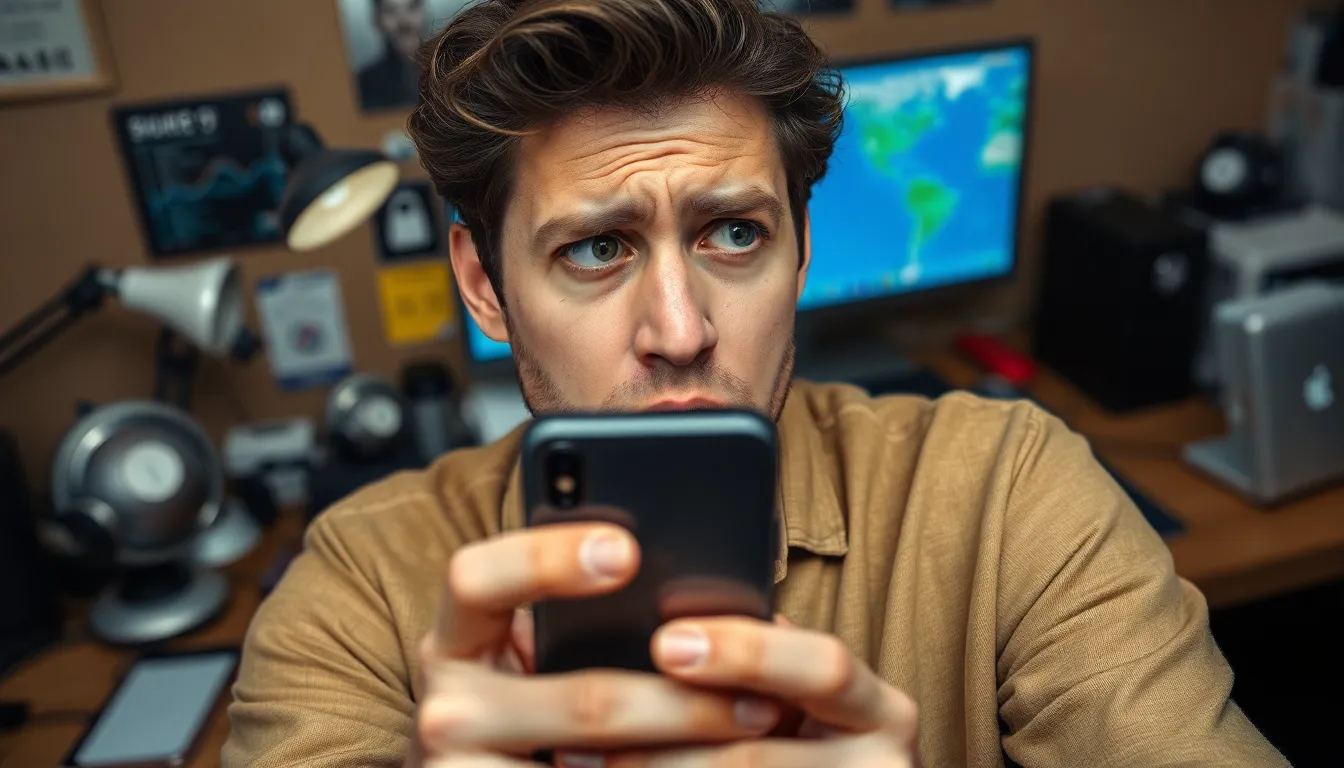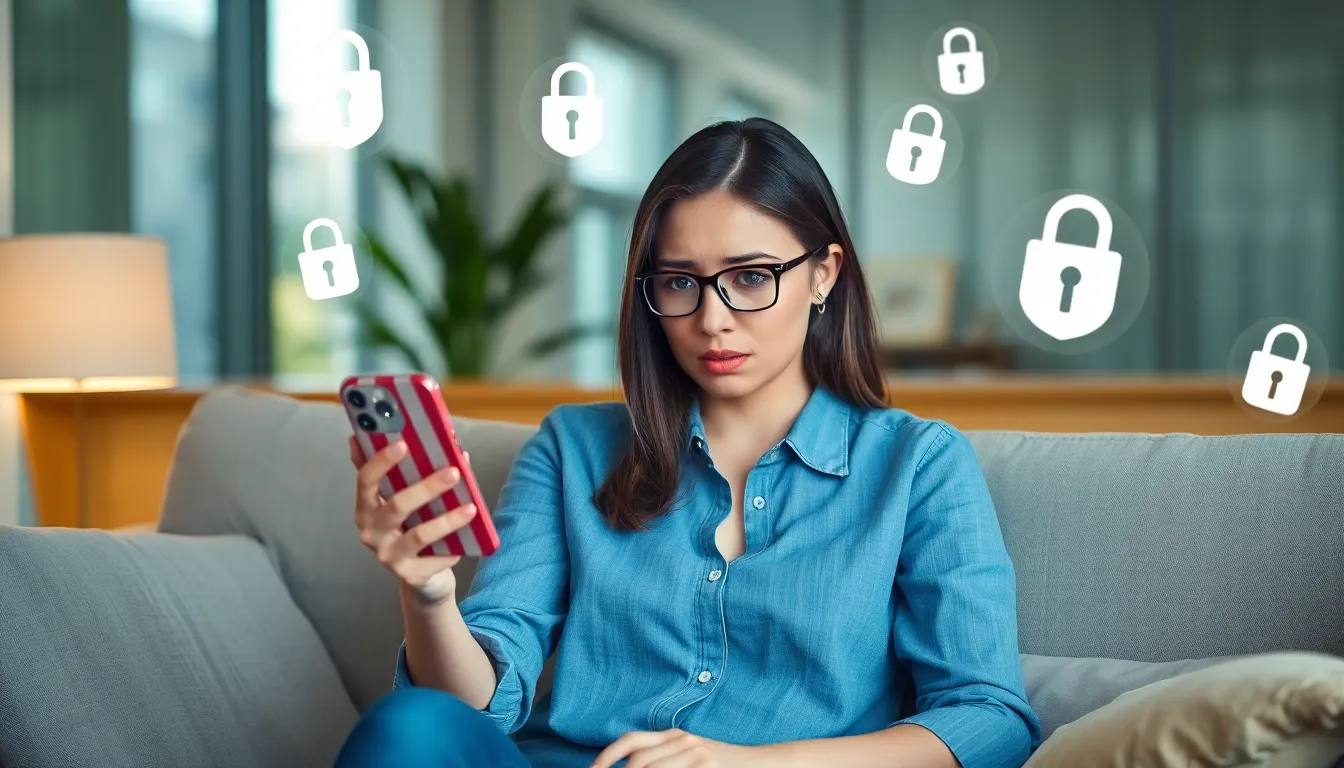Table of Contents
ToggleIn a world where selfies and cat videos reign supreme, it’s natural to wonder if those precious iPhone photos could fall into the wrong hands. After all, no one wants their embarrassing moments—like that accidental photo of their lunch—exposed to the world. But can iPhone photos really be hacked?
As technology evolves faster than a squirrel on caffeine, the digital landscape becomes a playground for hackers. With every new iOS update, the battle between security and vulnerability rages on. So, should you be worried about your photo library being invaded? Let’s dive into the nitty-gritty of iPhone security and find out if your cherished snapshots are safe or if they’re just one click away from becoming internet fodder.
Understanding iPhone Security
iPhone security plays a crucial role in protecting user data, including photos, from unauthorized access. Enhanced security measures help safeguard personal information in a digital landscape filled with risks.
Built-in Security Features
Apple incorporates numerous built-in security features to protect users. Face ID provides biometric authentication, ensuring only authorized users access iPhones. Touch ID is another option, allowing fingertip identification for unlocking devices and accessing apps. End-to-end encryption secures iMessages and FaceTime calls, preventing interception of sensitive data during transmission. iCloud Photos utilizes secure encryption during backups, adding another layer of safety. Regular iOS updates also introduce enhanced protections, addressing vulnerabilities and fortifying defenses.
Common Vulnerabilities
Despite strong security measures, vulnerabilities exist. Phishing attacks can target users through deceptive messages or emails, tricking them into revealing credentials. Outdated software may leave devices susceptible to exploits. Public Wi-Fi networks pose risks as hackers can intercept data over unsecured connections, threatening personal information. Malicious apps may exploit security loopholes, potentially accessing photo libraries. The convenience of sharing photos through various platforms might expose users to additional risks, making it essential to stay vigilant.
Methods of Hacking iPhone Photos

Hacking attempts can exploit various methods to access iPhone photos. Understanding these methods helps users identify and mitigate risks.
Malware and Spyware
Malware poses significant risks to iPhone security. Often disguised as legitimate applications, it can infiltrate devices unnoticed. Once installed, malware may access photos without user consent. Spyware, in particular, monitors activity, capturing images and data in the background. Users inadvertently download such threats through suspicious links or unverified app stores. Apple’s App Store has strict guidelines to limit such risks, yet vulnerabilities persist. Keeping iOS updated minimizes exposure to these threats.
Phishing Attacks
Phishing attacks remain a common tactic for hackers targeting iPhone users. Cybercriminals craft deceptive emails, messages, or pop-ups to lure individuals into revealing personal information. Clicking on these links can lead to compromised accounts, potentially exposing photo libraries. Victims receive messages that appear to be from legitimate sources, making detection challenging. Users must verify the sender’s authenticity before engaging with links or attachments. Strong passwords and two-factor authentication add layers of protection against unauthorized access.
Signs Your iPhone Photos May Be Compromised
Awareness of potential signs of compromise is essential for iPhone users. Identifying these indicators can help safeguard personal photo libraries.
Unusual Activity
Unusual activity in photo albums often signals a security breach. Users may notice unfamiliar photos appearing without their knowledge. Alterations in photo metadata can also indicate unauthorized access. Additionally, unusual sharing requests or sudden notifications about activity from unknown devices provide crucial warnings. Ongoing vigilance can prevent further exposure in these situations.
Unauthorized Access
Unauthorized access often manifests through unexpected password changes or login attempts. Users might receive alerts from Apple about logins from unknown devices or locations. Strange behavior in linked accounts may raise red flags, particularly if they’re connected to iCloud. Users should scrutinize account settings regularly to detect any unauthorized modifications. Keeping an eye on these indicators ensures prompt action against potential threats.
Protecting Your iPhone Photos
Safeguarding iPhone photos involves implementing various strategies to minimize risks and enhance security. Users can adopt a combination of best practices and encryption methods to protect their personal images effectively.
Best Practices for Security
Staying aware of security measures is vital. Users must regularly update their iOS software to benefit from the latest security enhancements. Employing strong, unique passwords for Apple IDs adds another layer of defense. Activating two-factor authentication ensures that even if a password is compromised, unauthorized access remains limited. When connecting to public Wi-Fi networks, avoiding sensitive activities protects against potential eavesdropping. Additionally, being cautious about clicking on links or downloading applications from untrusted sources directly reduces the risk of malware.
Using Encryption
Encryption plays a crucial role in securing personal data. Apple employs end-to-end encryption for iMessages and FaceTime calls, safeguarding conversations and shared photos. Utilizing iCloud Photos with secure encryption guarantees that photos remain protected while stored in the cloud. Users can enable device encryption through settings, preserving privacy for their photo library. Relying on built-in features such as these ensures that images remain inaccessible without consent, significantly reducing the chances of breaching sensitive content. Regularly backing up photos with encryption reinforces data safety even further.
iPhone users must remain aware of the potential risks to their photo libraries. While Apple provides robust security features to protect personal images, vulnerabilities can still exist. It’s essential for users to stay informed about the latest threats and adopt proactive measures to safeguard their data.
By regularly updating software and employing strong passwords, users can significantly reduce their risk. Awareness of phishing tactics and the dangers of public Wi-Fi also plays a crucial role in maintaining security. Ultimately, vigilance and informed practices are key to ensuring that iPhone photos remain safe from unauthorized access.




